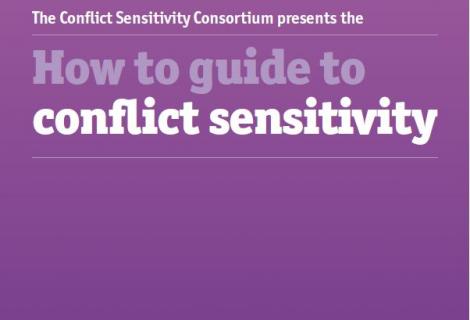
This Conflict Sensitivity Consortium, formed in 2008, brought together a broad spectrum of development, humanitarian, multi-mandate and peacebuilding organisations. The consortium comprises 35 humanitarian, development, peacebuilding and multimandate NGOs operating in Kenya, Sierra Leone, Sri Lanka and the UK, who all share a commitment to being more conflict sensitive.
This Guide draws upon Consortium experience to illustrate real examples of applying conflict sensitivity. It aims to provide practical advice suitable for anyone aiming to improve conflict sensitivity, whether in the field of development, humanitarian aid or peacebuilding work. It aims to provide user-friendly information for people who are focusing at project or at organisation-wide level, whether aiming for best practice or just starting out on the journey towards conflict sensitivity.
The Guide is organised into six core chapters:
- Chapter 1 – Conflict analysis – provides an introduction to, and practical guidance on, conflict analysis.
- Chapter 2 – Conflict sensitivity in the programme cycle – provides guidance on how to integrate conflict sensitivity across all stages of the project cycle (needs assessment, design, implementation, monitoring and evaluation)
- Chapter 3 – Key Issues for conflict sensitive programming – examines some of the most critical issues for conflict sensitive programming in depth, including targeting, procurement, relationship with communities/government/partners, feedback/accountability and exit strategies.
- Chapter 4 – Applying conflict sensitivity in emergency responses – provides tailored guidance on conflict sensitive emergency responses.
- Chapter 5 – Assessing institutional capacity for conflict sensitivity – provides guidance on how to conduct a self-assessment to assess organisational strengths and weaknesses in terms of conflict sensitivity.
- Chapter 6 – Building institutional capacity for conflict sensitivity – provides practical guidance on how to sustainably improve organisation-wide conflict sensitivity.